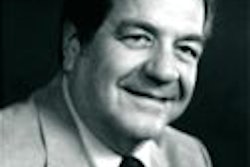Thanks to its ease of use and familiarity, SPECT is likely to remain the imaging modality of choice for myocardial viability assessment, even as other technologies emerge, according to Dr. Vasken Dilsizian, the director of the division of nuclear medicine and cardiac PET at the University of Maryland in Baltimore.
Dilsizian made his remarks during a panel session at the 2002 American Society of Nuclear Cardiologists meeting in Baltimore. He pointed out that, historically, the combination of stress testing and thallium SPECT has proved invaluable.
"The extent of myocardial viability seen with thallium does predict survival. You really need to stress (test) someone to assess viability," he said.
The main advantage that SPECT stress testing may have over other, newer technologies is that it’s a tried and true modality, echoed Dr. James Udelson, the director of nuclear cardiology at the Tufts-New England Medical Center in Boston.
The panelists agreed that both PET and MRI offer higher-quality images. But MRI requires a certain level of expertise in order to be effective, Udelson said. In addition, MRI can be a more time-consuming exam. Gated SPECT imaging allows for the simultaneous assessment of both perfusion and function in a single study (Nuclear Medicine Communications, June 2001, Vol. 22:6, pp. 663-671).
In comparison, even the latest MRI protocol for assessing heart disease requires the integration of multiphase gradient-echo cine MR imaging for assessment of cardiac function, first-pass myocardial perfusion imaging at rest and during adenosine stress, MR imaging with delayed contrast enhancement for assessment of myocardial viability, and coronary MR angiography with a 3-D respiratory navigator-gated technique (Radiology Online, August 2, 2002).
Myocardial viability testing has become increasingly important as doctors have realized that the success of revascularization in heart-failure patients is highly dependent on the extent of viability. A patient with few viable segments has a poor prognosis, while a patient with more areas of viable tissue is likely to benefit from intervention.
The beauty of SPECT imaging is that "it can provide, in a single stress study, information about degree of regional asynergy, segmental tracer uptake, regional contractile reserve, and changes in (left ventricular ejection fraction) during inotropic stimulation, obviating the need for separate tests to assess reversible dysfunction," wrote Italian researchers in the Italian Heart Journal (March 2002, Vol. 3: Supplement 3, pp. 309-318).
"Up until the last couple of years, heart failure has been seen as an end-stage diagnosis," said Dr. Robert Hendel, director of nuclear cardiology at Rush-Presbyterian-St. Luke’s Medical Center in Chicago. "Using viability testing with SPECT, heart specialists are able to answer a simple question: ‘Will this patient get better?’"
By Brian ReidAuntMinnie.com contributing writer
November 8, 2002
Related Reading
Along with SPECT, PET and MRI find niche in myocardial assessment, October 21, 2002
Referring physicians reserve perfusion imaging for sickest patients, September 30, 2002
Increased water intake increases image clarity in nuclear perfusion imaging, September 30, 2002
Wait time reduced with new rest-stress test protocol, September 27, 2002
Copyright © 2002 AuntMinnie.com




















